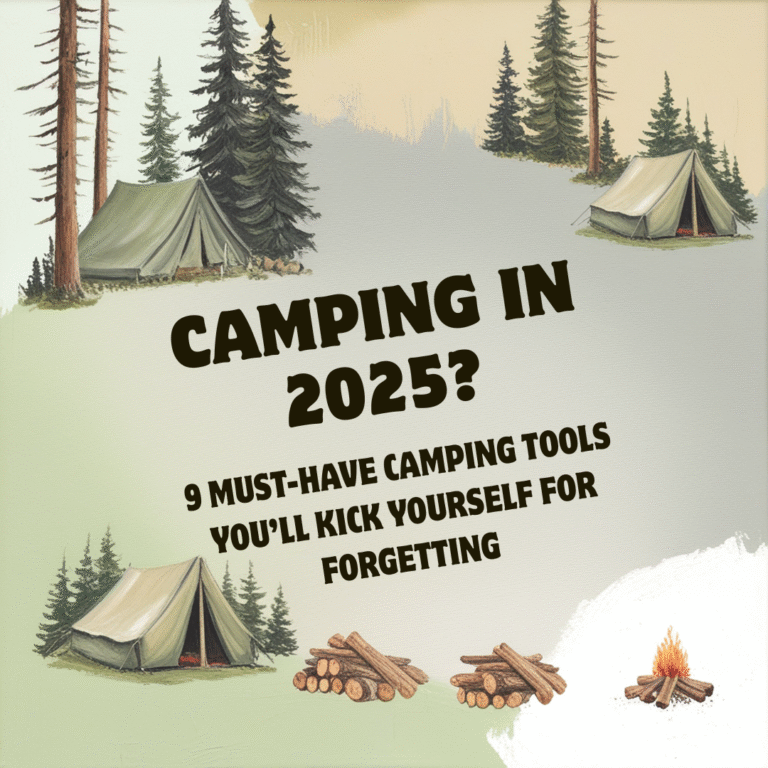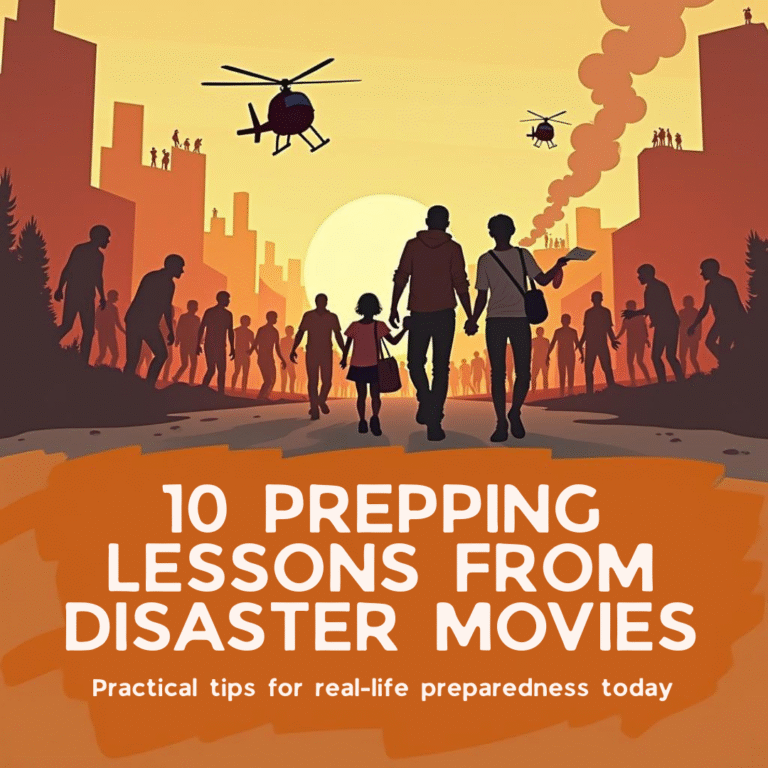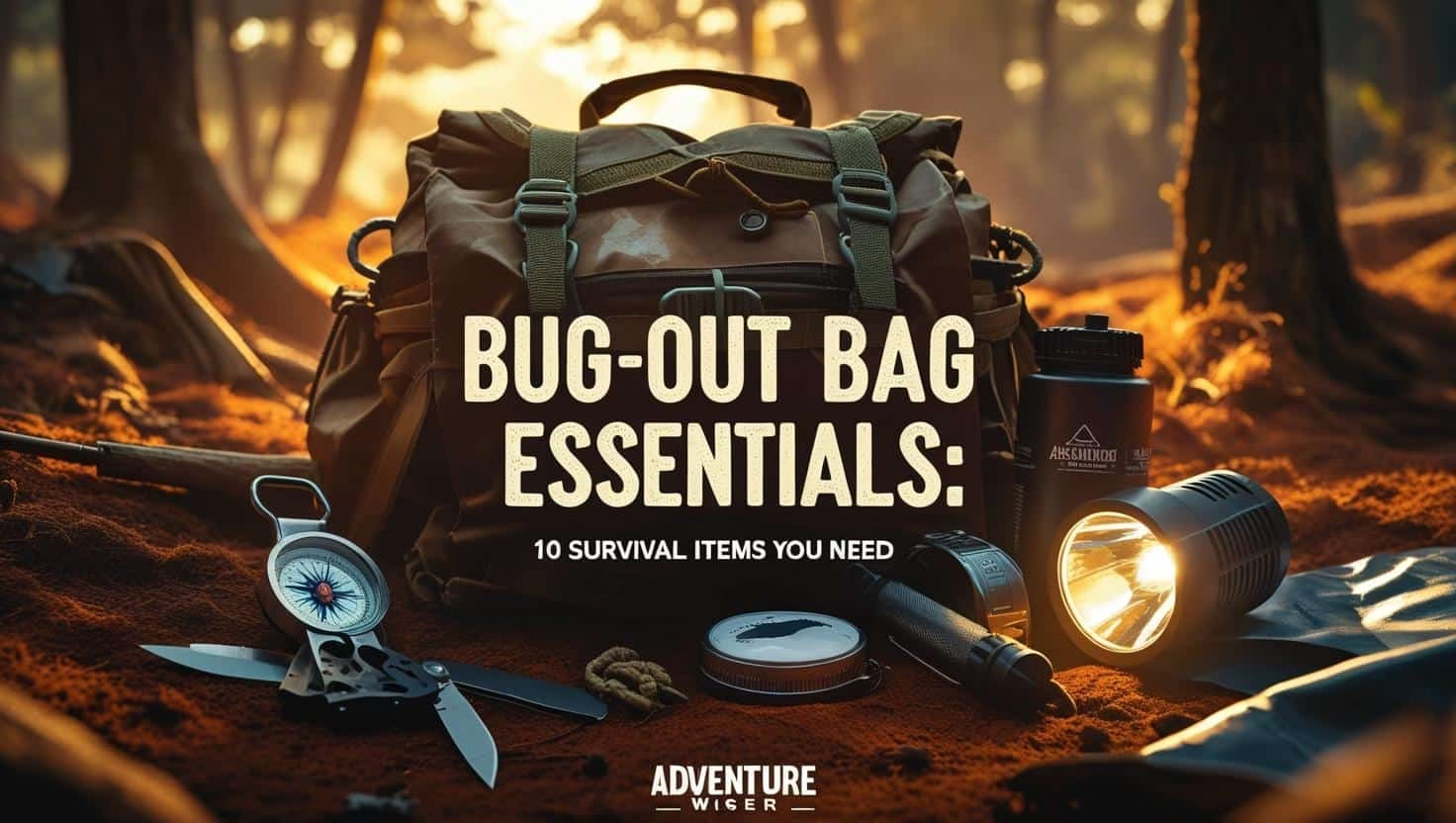
Why Your Bug-Out Bag Can’t Suck
Picture this: The power grid fizzles out like a cheap string of Christmas lights, cell service drops to the dreaded “SOS Only”, and your neighbor’s gas generator sounds like it’s coughing its last breath (right before it guzzles the last of his fuel stash). While everyone else is panicking, you’re sitting back with a hot cup of coffee brewed by nothing but sunlight and smug preparedness. Why? Because you had the foresight to build a bug-out bag that doesn’t suck.
A well-packed bug-out bag isn’t just a bag—it’s your lifeline, your backup plan, and your get-out-of-dodge kit when life decides to throw you a curveball. Whether it’s a sudden storm, a weekend camping trip that goes “unexpectedly wild,” or something a little more end-of-the-world-ish, the right gear can mean the difference between “I’ve got this” and “Oh no, I’m the next episode of Survivor: Backyard Edition.”
The truth is, your bug-out bag should be ready for anything—power outages, long hikes, and even unexpected overnights in the wild. But packing it right isn’t about stuffing it full of random gadgets and expired granola bars. It’s about curating The Ten Essentials—the survival must-haves that make you look less like an amateur hiker and more like the MacGyver of the trail.
Oh, and we’re not stopping there. I’ll even share bonus gear that turns a good bug-out bag into a legendary one. Ready? Let’s get your pack dialed in.
Why I Care About Bug-Out Bags (Adventure Wiser Story)
Adventure Wiser isn’t just a blog name—it’s my second chance. After a life-saving liver transplant, I swapped IV lines for hiking poles and hospital walls for mountain trails. Being prepared—mentally and physically—isn’t optional when life throws curveballs. That’s why this bug-out bag checklist isn’t just theory—it’s gear I trust when I head out into the wild.
The Ten Bug-Out Bag Essentials
1. Navigation (Maps, Compass, GPS)
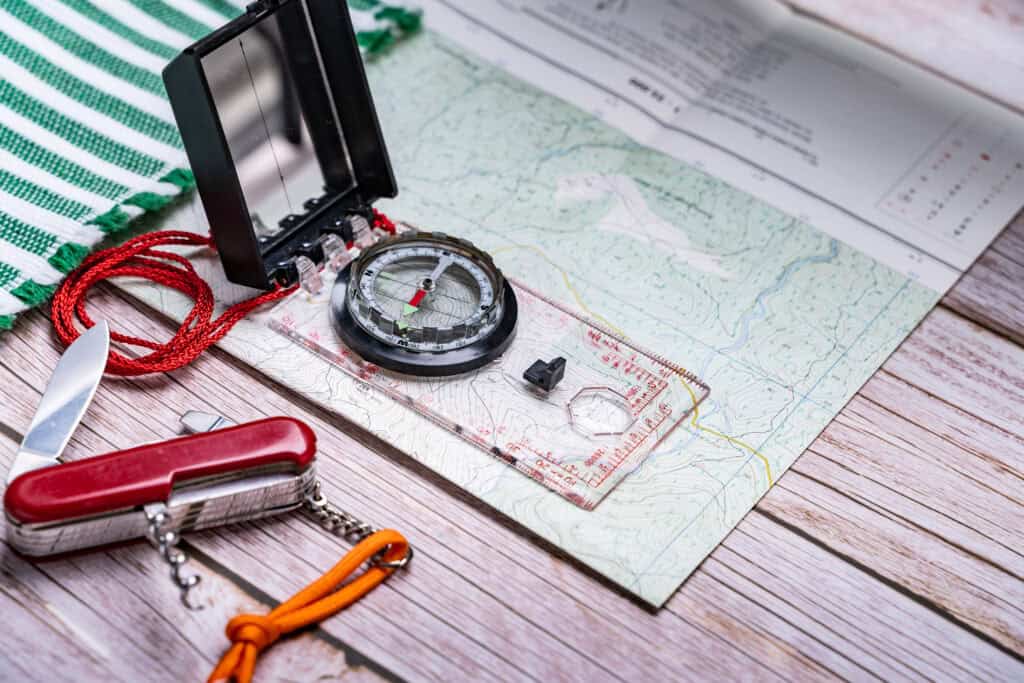
Your smartphone is great… until it’s as useful as a paperweight in the middle of nowhere. Dead battery, no signal, and suddenly “Google it” isn’t an option. That’s why old-school tools still reign supreme:
- A paper topo map that doesn’t need Wi-Fi or 5G.
- A compass (Silva Explorer 2.0 is a classic) because sometimes knowing which way is north is kind of important.
- A rugged GPS unit like the Garmin eTrex 32x for when you need pin-point accuracy and can’t risk guesswork.
Pro Tip: Mark water sources and exit routes ahead of time. And yes, learn how to read a map—because “winging it” is what lost hikers say right before becoming a headline.
2. Sun Protection (Sunscreen, Hat, Sunglasses)
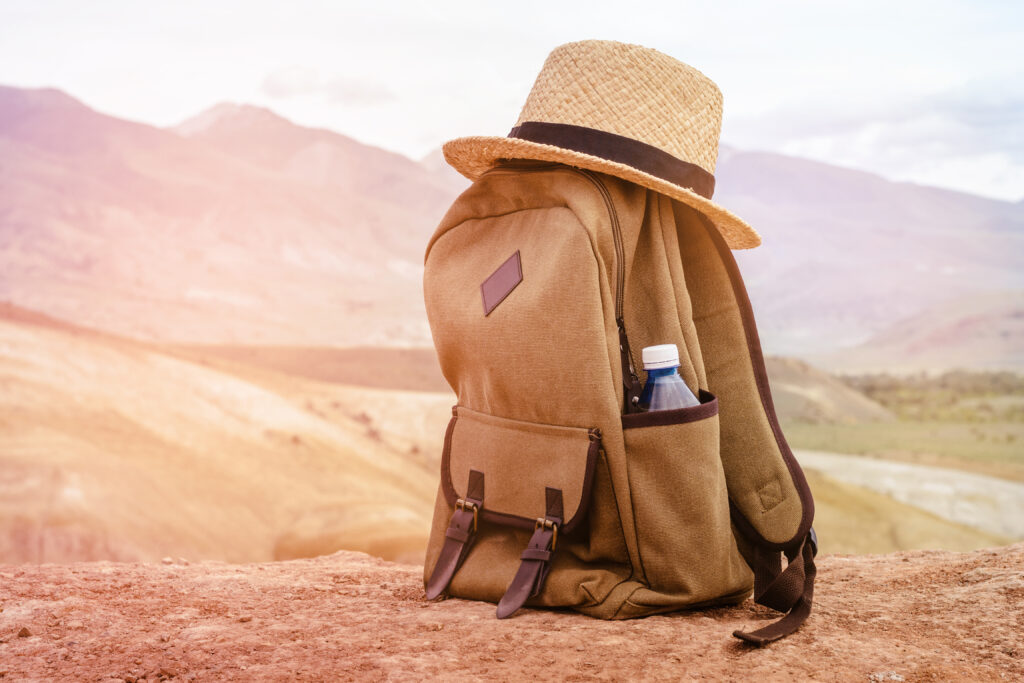
You’re out there to survive, not roast like a rotisserie chicken. Sunburns can sap your energy, dehydrate you, and make you look like a lobster at the worst time.
- Pack a broad-spectrum SPF 30+ sunscreen (water-resistant if possible).
- A wide-brim hat and polarized sunglasses that won’t snap the first time you drop them.
Witty Tip: Think of sunscreen as invisible armor. You wouldn’t go into battle without gear—why go into the sun bare-skinned?
3. Insulation (Layers & Weather Gear)
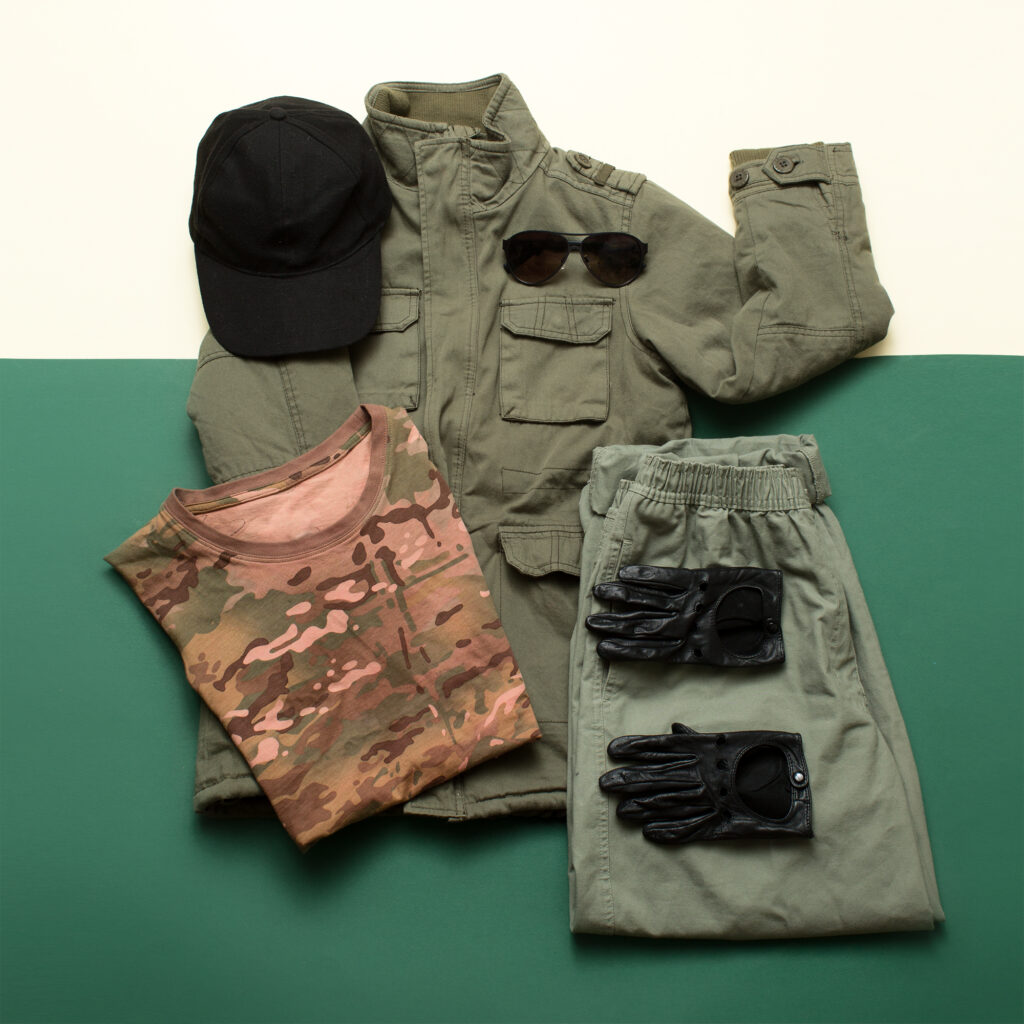
Mother Nature is unpredictable. One minute, it’s a perfect 70°F; the next, you’re being pelted with sideways rain while the temperature drops 20 degrees.
- Merino wool base layers (because cotton is basically a sponge).
- A lightweight puffer jacket that packs down like a burrito.
- A rain shell to keep you from feeling like a soaked sponge.
Pro Tip: Even if you think you won’t need it, throw in an extra layer. You’ll thank me when you’re not shivering like a phone on vibrate.
4. Illumination (Headlamp & Backups)
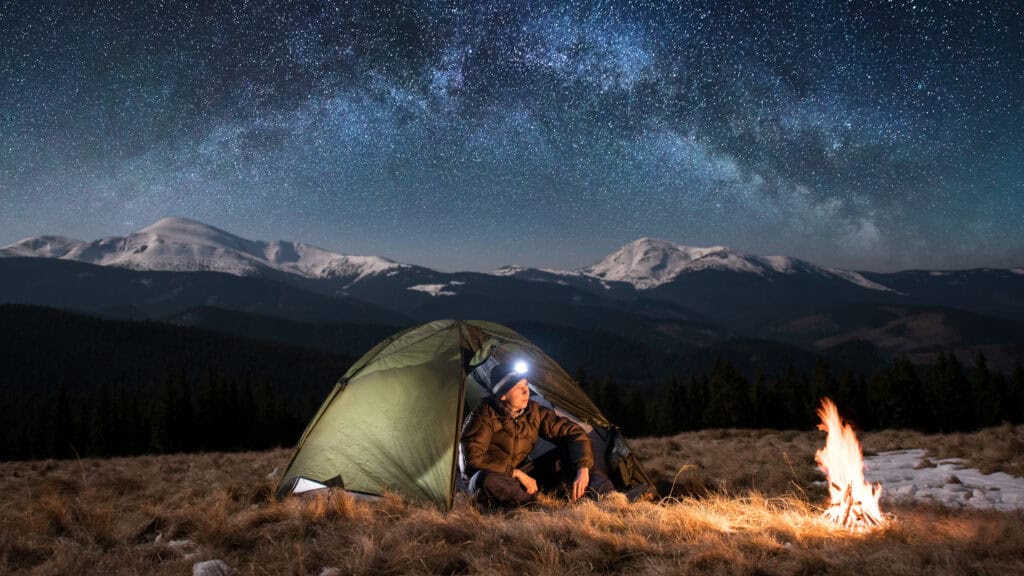
Darkness is the enemy. Stumbling around camp or a trail without light is how ankles get twisted and egos get bruised.
- Headlamps > flashlights because hands-free light is a game-changer.
- Try a Petzl Actik Core or Fenix HM50R for reliability.
- Always pack extra batteries—darkness has zero mercy for your forgetfulness.
Witty Tip: Don’t rely on your phone flashlight. It’s a battery-draining diva that’ll quit when you need it most.
5. First Aid Kit
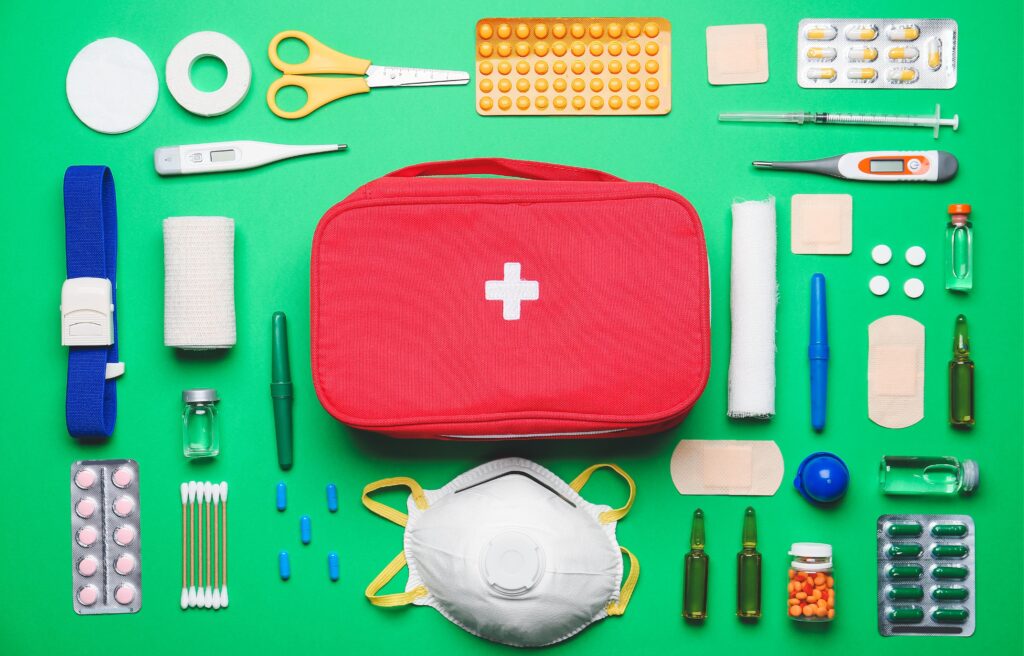
Even a small blister can ruin your weekend if you’re limping around like a pirate.
- Pre-made kits like Adventure Medical Kits Ultralight/Watertight save time and pack small.
- Add extras like pain relievers, antiseptic wipes, and a tourniquet (better to have it and not need it).
Pro Tip: Test your kit at home. Better to fumble with bandages in your living room than when you’re bleeding on a log.
6. Fire (Lighters, Ferro Rod, Waterproof Matches)
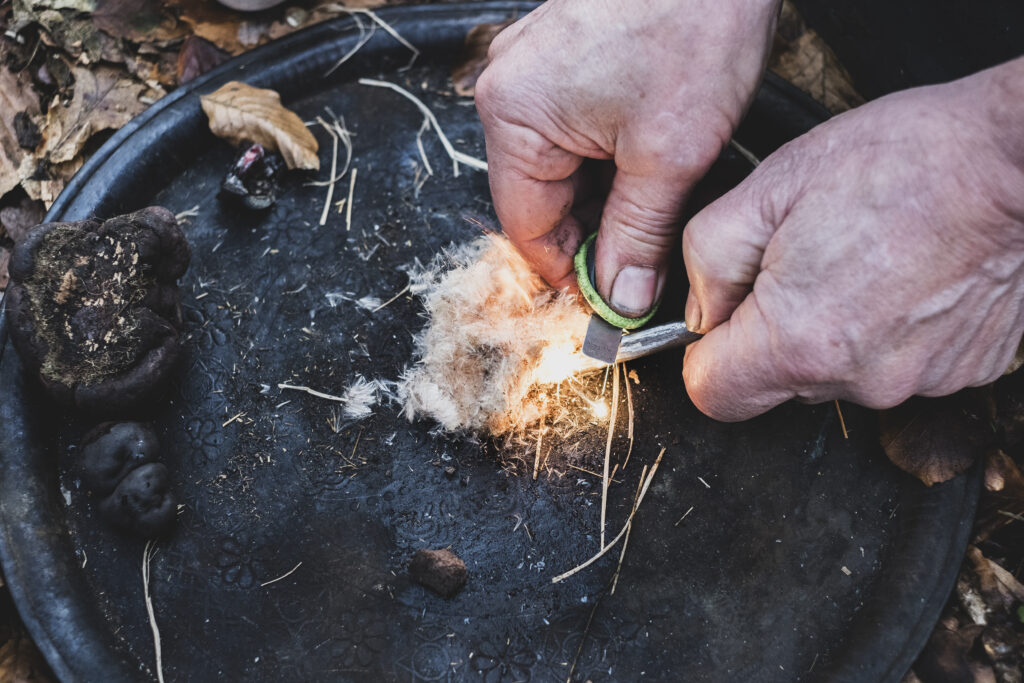
Fire is warmth, food, and morale all rolled into one. If you don’t have fire, you’re just camping in misery.
- Pack two or three fire-starting options:
- Bic lighters (cheap, reliable).
- Ferro rod for “forever sparks.”
- Waterproof matches for when Mother Nature is feeling cruel.
Witty Tip: No, rubbing sticks together isn’t going to work. Leave that to the cavemen (and Hollywood).
7. Repair Kit & Tools

When your gear breaks, you’ll wish you had this stuff:
- A multi-tool (Leatherman Wave+ or Gerber Center-Drive).
- Duct tape (wrap a few feet around a lighter to save space).
- Zip ties because you can never have too many “instant fixes.”
Pro Tip: If you don’t have duct tape in your pack, you’re not really prepared. It’s the Swiss Army knife of sticky stuff.
8. Nutrition (High-Calorie Food)

Trail mix is great, but when your stomach starts growling louder than a bear, you’ll wish you had something hearty.
- Energy bars (Clif Bars, RXBARs).
- Jerky and peanut butter packets for protein.
- Freeze-dried meals like Mountain House (add boiling water, boom—instant dinner).
Witty Tip: Pack at least 2,000 calories/day per person. You burn more energy than you think when survival stress kicks in.
9. Hydration (Water & Filters)
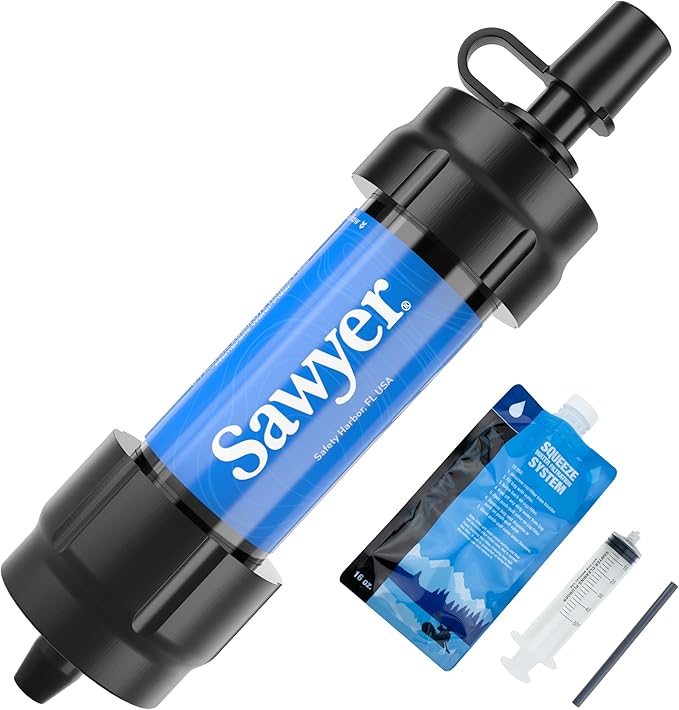
Dehydration will knock you down faster than hunger or cold.
- Sawyer Mini or LifeStraw filters are lightweight and reliable.
- Carry collapsible water bladders or bottles to store extra water.
- Throw in water purification tablets for backup.
Pro Tip: Find water sources on your map before your bottle runs dry. “Thirsty scouting” isn’t fun.
10. Emergency Shelter
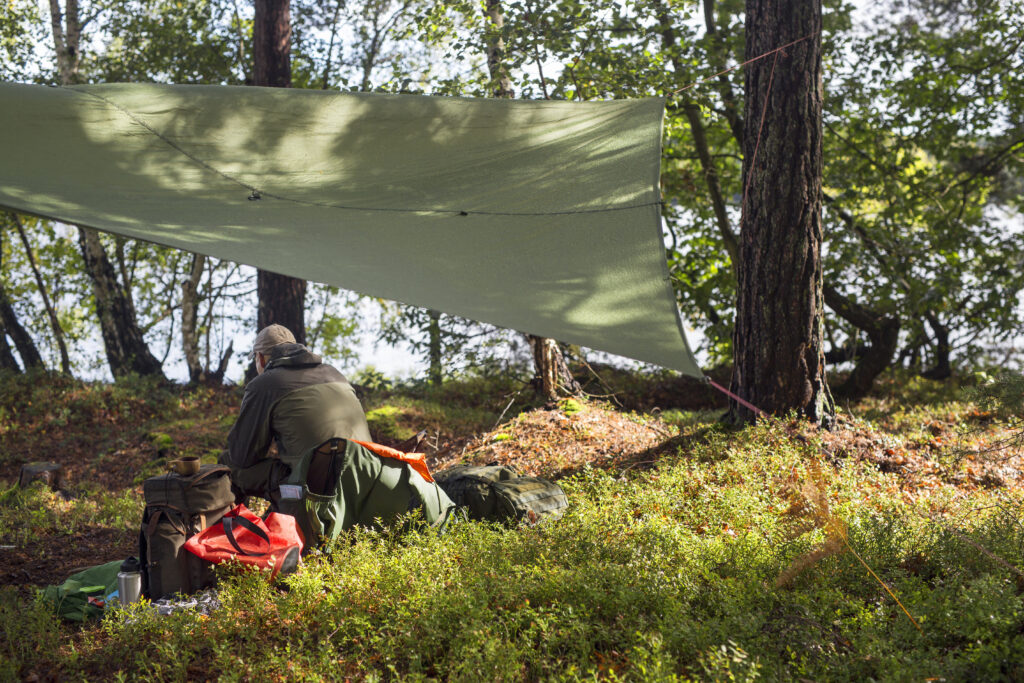
A tent is nice, but when things go south, all you really need is something to keep you dry and warm.
- A compact tarp (DD Hammocks makes bombproof ones).
- An emergency bivvy bag or mylar blanket (tiny but life-saving).
- A 50-foot paracord for rigging everything into a quick shelter.
Witty Tip: Shelter = survival. Even a cheap tarp can feel like a castle when it’s pouring.
Bonus Gear Every Smart Prepper Packs
Your bug-out bag may already be a survival powerhouse with the Ten Essentials, but if you want to graduate from “prepared camper” to “legendary bushcraft wizard”, these bonus items will take your game to the next level.
- Solar Power Bank (Amazon Affiliate Link) to keep your gadgets alive.
- ESEE 4 Survival Knife (Amazon Affiliate Link).
- Pepper spray or personal defense tools.
1. Solar Power Bank (or Portable Solar Panel)
Your phone might be useless for Google Maps, but it’s still your camera, flashlight backup, and SOS tool—so keeping it charged is critical.
- A solar power bank can sip energy from the sun while you’re on the move.
- For a full setup, pack a foldable solar panel like the EcoFlow 110W Portable Solar Panel (Amazon Affiliate Link).
Scenario: While everyone else is begging their dead phones to “just turn on one last time,” you’re streaming offline maps and snapping photos of that epic sunrise. Because power is modern survival currency.
2. Survival Knife (Fixed Blade)
Forget the cheap Swiss Army knock-off. A real survival knife is your cutting tool, hammer, pry bar, food prep tool, and defensive weapon rolled into one.
- The ESEE 4 or Morakniv Garberg is a favorite among serious preppers.
Scenario: Whether you’re splitting kindling, making a snare trap, or scaring off curious raccoons, a good knife is your survival sidekick. Plus, nothing says “prepared” like the guy casually carving tent stakes while everyone else is panicking.
3. Paracord (50+ Feet)
Paracord is basically the duct tape of rope—it can do a thousand things and then some. I have over 150+ feet of paracord stored around my house and vehicle.
- Rig shelters, repair gear, hang food bags, make fishing lines, or even use the inner threads for sewing.
Scenario: Rainstorm coming? Paracord + tarp = instant dry fortress. Hungry? Paracord inner strands = improvised fishing line. Stylish? You can even braid it into a bracelet for that rugged, “I’m ready for anything” look.
4. Backup Power (Mini Solar Generator)
This isn’t overkill; it’s smart prepping. A small, portable solar generator like the Jackery Explorer 240 (Amazon Affiliate Link) can power lights, radios, and even mini-cooking setups.
- It’s especially valuable for longer bug-outs or basecamp situations.
Scenario: While your camp neighbors are eating cold beans by flashlight, you’re running a small lantern, charging radios, and maybe even blending a trail margarita (no judgment).
5. Personal Defense Tools
Not everything in the wild is friendly. Sometimes you need something that says, “No, you can’t have my snacks.”
- Pepper spray for animals or people.
- A tactical pen (because who doesn’t love multi-use gear?).
- For experienced users, a compact firearm (where legal). Or more than one firearm. I prefer multiple choices for this scenario.
Scenario: You’ll never know the relief of having pepper spray until you meet an overly friendly raccoon at 2 a.m. near your food stash.
6. Firepower Upgrade (Mini Stove)
Sure, you can start a fire, but what if it’s pouring rain? A compact camp stove like the MSR PocketRocket 2 (Amazon Affiliate Link) weighs almost nothing and boils water faster than you can say “instant ramen.”
Scenario: Hot coffee in 2 minutes. Enough said.
Witty Takeaway on Bonus Gear
Your bug-out bag should work smarter, not harder. These bonus tools are about comfort, confidence, and capability—because surviving doesn’t have to mean suffering.
Common Bug-Out Bag Mistakes
- Overpacking: If it weighs as much as a toddler, you’ll leave it behind.
- Cheap Gear: That $5 flashlight? Dead on day one.
- Not Testing Gear: You’ll look like a rookie trying to light a fire with soggy matches.
Your Bug-Out Bag Checklist (Copy & Paste)
| Item | Weight | Brand Suggestion |
|---|---|---|
| Navigation | Light | Garmin eTrex 32x |
| Sun Protection | Light | Banana Boat SPF 30 |
| Insulation | Medium | Patagonia Nano Puff |
| Illumination | Light | Petzl Actik Core |
| First Aid | Medium | Adventure Medical Kit |
| Fire Starters | Light | Bic + Ferro Rod |
| Repair Tools | Light | Leatherman Wave+ |
| Nutrition | Medium | Clif Bars, Trail Mix |
| Hydration | Medium | Sawyer Mini |
| Shelter | Medium | DD Tarp + Mylar Blanket |
[Download the full PDF Bug-Out Bag Checklist here] (Lead magnet opportunity).
Witty Closing Takeaway
A bug-out bag isn’t about paranoia; it’s about freedom. It means you’re ready for anything—whether it’s a weekend adventure or the zombie apocalypse. (But if zombies show up, call me first.) I have a few toys that are more powerful than…..bear spray!
Call to Action
Want gear recommendations and field-tested reviews delivered to your inbox?
[Subscribe to Adventure Wiser] and get exclusive guides, from solar power setups to wild camping hacks.

